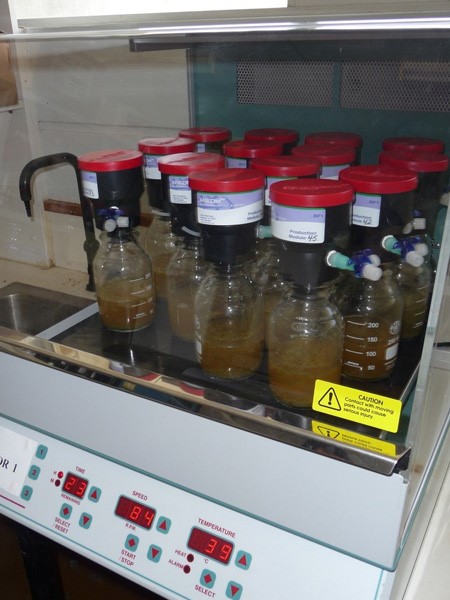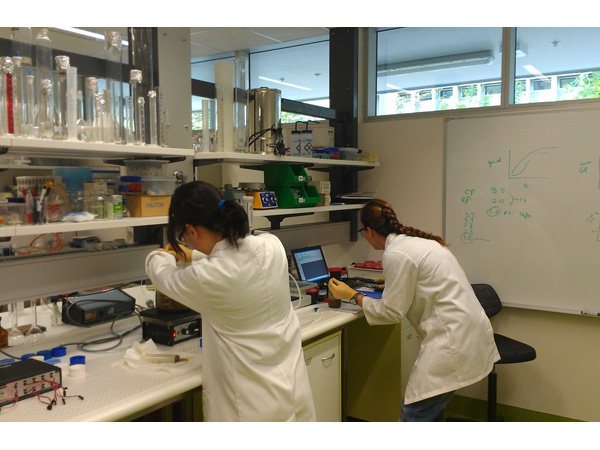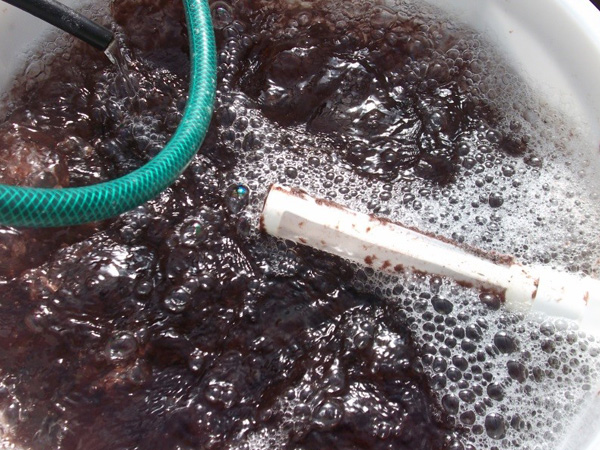Seaweed solves gas output
Feeding livestock algae-based foods might help Australia reduce its methane emissions.
The Development of algae based functional foods for reducing enteric methane emissions project, funded through the Filling the Research Gap programme and conducted by CSIRO in collaboration with Meat and Livestock Australia, showed that feeding livestock red macro-algae has the potential to maintain or increase productivity while reducing methane emissions.

Asparagopsis taxiformis is grown at a small scale at the Centre for Macroalgal Resources and Biotechnology JCU.
The project, which ran from 2012 to 2015, evaluated the potential of up to 20 different kinds of algae for their nutritive value and for their effect on reducing methane emissions in beef cattle. For species of algae that showed strong potential, the project undertook a more detailed analysis to identify the precise quantities and combinations required to achieve specific levels of methane reduction, while maintaining the efficiency of feed utilisation.

CSIRO Staff and JCU PhD student Lorenna Machado prepare an experiment in vitro.
Methane in the atmosphere is a potent greenhouse gas with a global warming potential 25 times that of carbon dioxide. Agriculture and waste management combined account for 62 per cent of global anthropogenic methane emissions, and ruminant enteric fermentation is responsible for 58 per cent of the agriculture contribution. Dr Nigel Tomkins, Research Scientist and Project Leader, said: “In Australia, contribution of methane from ruminant livestock is approaching 10 percent of total greenhouse emissions. These levels have invoked a universal effort to reduce emissions from ruminant agriculture and one of the identified processes to manage enteric methanogenesis is through feed modification.”

A batch culture approach in the laboratory is first used to assess the potential of algae to inhibit methane production in vitro.
Experiments in cattle and sheep have shown that feeding dried and ground preparations of the species red macro-algae (Asparagopsis taxiformis) reduced emissions by up to 60 per cent. Total feed intake was not significantly affected and in some cases actually increased. “The red algae appears to change the concentration of short-chain fatty acids in the rumen, which provides an alternative sink for hydrogen – a key element in methane production,” Dr Tomkins explained.
“There is potential for red algae to have a major role in reducing methane emissions across all Australian livestock industries. However, at present, production costs are high and availability is limited. Work is underway to develop commercially viable production systems, potentially in conjunction with marine aquaculture operations, which would have the added benefit of reducing pollution. If production costs of red algae can be reduced, this practice would be profitable for many producers,” Dr Tomkins concluded.



